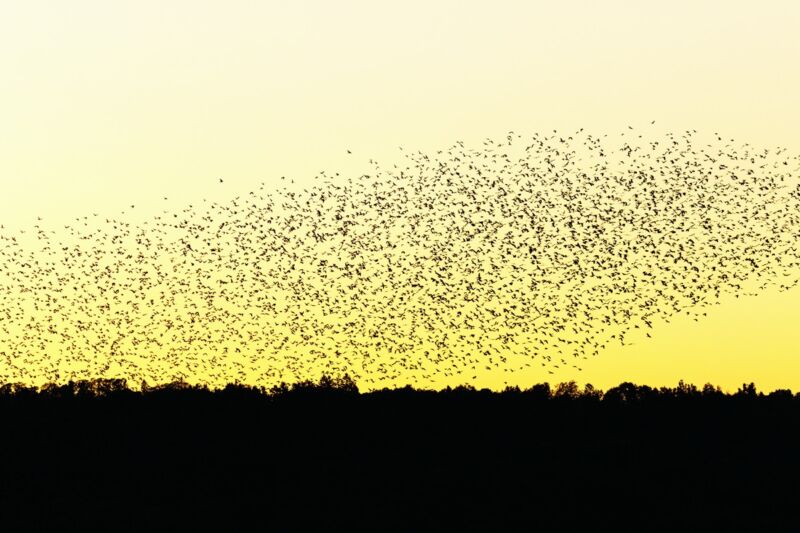Birds of a feather flock together, but patterns change with the mission

Enlarge / Large flock of jackdaws in silhouette flying in the evening sky over the trees. (credit: iStock / Getty Images Plus)
There's rarely time to write about every cool science-y story that comes our way. So this year, we're once again running a special Twelve Days of Christmas series of posts, highlighting one science story that fell through the cracks in 2020, each day from December 25 through January 5. Today: why flocks of jackdaws will change their flying patterns depending on whether they are returning to roost, or banding together to drive away predators.
Flocks of wild jackdaws will change their flying patterns depending on whether they are returning to roost or banding together to drive away predators, according to research originally slated to be presented at the 2020 APS March Meeting, which was cancelled due to the coronavirus pandemic. The work builds upon earlier findings published in a November 2019 paper in Nature Communications. This could one day lead to the development of autonomous robotic swarms capable of changing their interaction rules to perform different tasks in response to environmental cues.
Co-author Nicholas Ouellette (no relation), a physicist-turned-environmental engineer at Stanford University, has long been fascinated by biological swarms after noting how flocks of starlings in flight formed unusual patterns that, to his physicist's eye, looked a lot like turbulence. He thought there must be underlying mechanisms behind the formation of those patterns-possibly even a set of universal laws that could apply to collective behavior across different species.
Read 13 remaining paragraphs | Comments